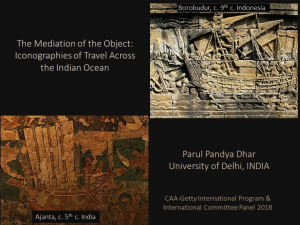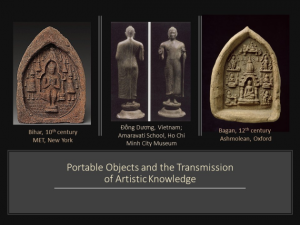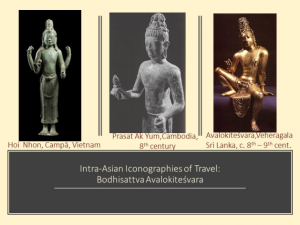CAA News Today
Parul Pandya Dhar Abstract
posted by CAA — May 22, 2018
2018 Global Conversations
Border Crossings: The Migration of Art, People, and Ideas
Sponsored by the CAA-Getty International Program and CAA’s International Committee
Featuring five alumni of the CAA-Getty International Program
Panelist: Parul Pandya Dhar
Affiliation: University of Delhi, India
Paper Title: The Mediation of the Object: Iconographies of Travel Across the Indian Ocean

As 21st-century members of a global community accustomed to instant worldwide networks, it takes a certain degree of ‘historical imagination’ to comprehend the nature of interaction systems that had linked pre-modern societies and cultures. My paper explores the theme of ‘art and migration’ across early Indian Ocean linkages, specifically the movement of artistic ideas, objects, and people between India and Southeast Asia during the sixth to tenth centuries CE. These long-distance material and human migrations transpired on account of a variety of reasons such as pilgrimage, trade, war, diplomatic embassies, and more. Narratives of such travels and translocations, and of their subsequent localization in the different zones of contact, offer rewarding opportunities for investigating cross-cultural histories of art. Towards this objective, I will take up select case studies to explore the mobility of art-objects and their relationships to the journeys of people along the maritime silk route(s).
At a methodological level, I will examine the important role played by portable objects such as tiny terracottas, bronzes, illustrated manuscripts and miniature architectural models in the formulation of newer art vocabularies in distant lands, and the inextricable ways in which such material movements are tied to human endeavor and impulse for travel. My paper will highlight the specific circumstances for such translocations and translations and their bearing on particular art forms. In doing so, the paper foregrounds key methodological concerns to help understand the role of human journeys and migrant objects in shaping connected histories of early South and Southeast Asian art.




